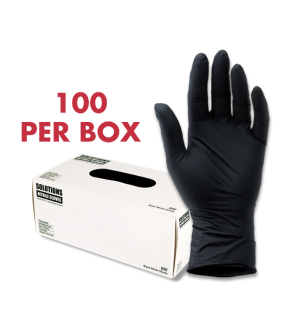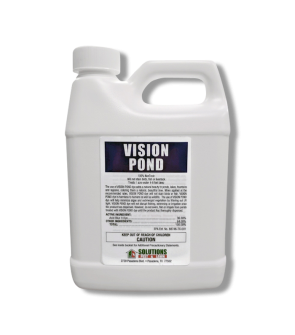Gain access to personalized product screening, the best pricing, rewards, and more!
Most Effective Products
How to Measure Surface Acre of Water
This page is a general DIY guide on measuring a pond, lake, or other water body surface acre. Using the methods and tips suggested, you will accurately measure and determine how much aquatic pesticide or herbicide to use.
When managing a water body such as a pond or lake, knowing the size is very important when determining how you want to stock your pond for fish or apply a type of pesticide or herbicide treatment.
Although it may seem daunting, it's not as difficult as you would think. By following these steps and tips, you will be able to easily measure the surface area, acre-feet, and depth of your water body.
However, if you still have questions, you can always reach out to our customer service team by phone, email, or by stopping by in person at one of our store locations.
Tools Needed
Measuring water surface acreage accurately is crucial for determining the correct dosage of aquatic herbicides. Here are the key tools you can use:
GPS Devices & Mapping Apps
- Handheld GPS – Used to walk or boat around the water body while recording waypoints to calculate the surface area.
- Smartphone Apps (Google Earth etc) – This allows you to trace the water body on a map to estimate surface acreage.
Aerial & Satellite Imagery
- Google Earth/Google Maps – Provides an aerial view to outline and measure water surface area.
- Drones (with mapping software) – Can capture aerial images for accurate area measurement in large or irregularly shaped ponds or lakes.
Measuring Tape & Range Finders
- Laser Range Finder – Measures distances across the water when GPS is unavailable.
- Measuring Tape (for small ponds) – This can be used if the pond is easily accessible.
For irregular shapes, you may need GPS mapping or aerial tools.
It may also be required to use a boat to take certain measurements for water sites and aquatic herbicides.
How to Measure A Pond or Water Body
Step 1: Assess the Site
Determine if the water you intend to treat is a pond, lake, river, or wetland. The size, depth, and flow patterns of the body of water will influence herbicide choice and application methods.
Measure parameters like pH, temperature, turbidity, dissolved oxygen, and conductivity. These factors can affect herbicide efficacy and environmental safety.
Identify the types of aquatic plants present and the extent of their coverage. This helps in selecting the right herbicide and determining the required dosage.
Also, be sure to check if your water site is connected to other water sites, such as public waters.
You will also need to check with your local state fish and game agency and water control authorities before applying this product to public water.
Permits may be required to treat specific water sites.
Step 2: Measure the Treatment Site Depth
We recommend you first find the depth of the water body by using a depth finder or another physical measurement tool like a weighted rope (this will be a rope with a rock or metal sinker attached to the end).
Be sure to measure in different parts of the water, as the herbicide application rates may differ by depth.
Lower the weighted rope into the water until it touches the bottom. Pull up the rope and measure the wet portion to determine the depth.
Another tool you could use is a pole or Secchi disk. However, these are mainly for smaller ponds, marshes, or shallow areas of water.
Use a long pole marked with depth measurements. Insert it into the water until it touches the bottom. Record the depth at multiple locations.
For larger water bodies like lakes, ponds, deep water bodies, and professional surveys, a depth finder is best.
Most depth finders will need to be mounted on a boat and then powered on. Install and operate the depth finder as instructed in its product manual.
Move across different areas and record depth readings at various points to detect depth.
After taking multiple depth measurements across the water body, use the following formula to calculate average depth: Average depth = sum of all depth measurements / number of measurements.
Step 3: Measure Surface Area Acerage
Once you have found out the water depth, you can determine the surface acreage of water.
We recommend using the tools mentioned above to find the length and width of these water sites.
If you are using a measuring tape, which only works for small ponds, stretch it or a marked rope across the longest part of the pond to find the length.
Measure the widest part of the pond to find the width.
To find the length and width of medium-sized ponds with a range finder - stand at one end and point it to the opposite end to measure the length. Repeat the process for the widest part of the pond to measure width.
For large or irregular-shaped ponds, we recommend using a GPS or Mapping device. Most of these devices will instruct you to walk or boat around the longest and widest part of the water.
If the pond is irregularly shaped, divide it into sections and measure each part separately.
Now that you have the length, width, and depth, you can proceed with one of the following measurement formulas to find the surface acre.
For rectangular ponds: length (ft) X width (ft) / 43,560 = surface acres.
For circular ponds: 3.14 X radius (measured in square feet) / 43,560 = surface acres.
For irregular ponds: divide the pond into smaller sections (triangles, rectangles) and sum their areas.
Step 4: How to Calculate Acre-Feet (Volume)
Now, multiply the surface area (acres) by the average depth (feet).
Surface acres X Average depth (ft) = acre-feet.
For example, if your pond size is 2 acres and the water depth is 6 feet, this means the pond holds 12 acre-feet of water.
Key Takeaways
What Herbicides Can Be Used In Ponds?
- An aquatic herbicide that is listed for ponds can be used to control unwanted aquatic vegetation.
How to Prevent Weeds In Ponds
- Consistent water movement, ongoing aquatic herbicide treatments, and the use of a pond dye like Vision Pond Dye can help prevent weeds in ponds.
What Causes Weeds in Ponds?
- Pond weeds are often caused by high nutrient levels in the water, which often come from decaying organic materials in the water.








